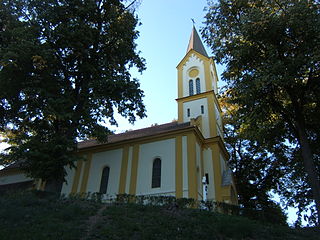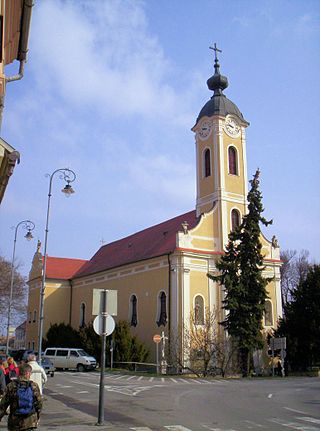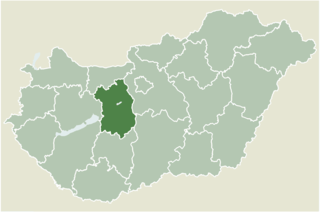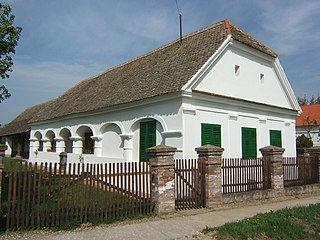
Somogy is an administrative county in present Hungary, and also in the former Kingdom of Hungary.

Szekszárd is a small city in southern Hungary and the capital of Tolna County. By population, Szekszárd is the smallest county capital in Hungary; by area, it is the second-smallest.

Barcs is a border town in Somogy County, Hungary, and the seat of Barcs District. The Drava River marks the southern boundary of the settlement.
Békésszentandrás is a village in Békés county, in the Southern Great Plain region of south-east Hungary.

Kapoly is a village in Somogy county, Hungary. Political leader János Kádár originates from the village, his childhood was spent in Kapoly.

Ecseny is a village in Somogy county, Hungary.

Kercseliget is a village in Somogy County, southern Hungary.

Somogyegres is a village in Tab District, Somogy county, Hungary.

Somogysimonyi is a village in Somogy County, Hungary. It incorporates the earlier separated villages of Gardos-puszta, Irma-puszta and Angyalvár-telep.

Somogyszil is a village in Somogy county, Hungary.

Babócsa is a village in Somogy County, Hungary.

Bonyhád is a town in Tolna County in Southwestern Hungary.

Hács is a village in Somogy county, Hungary.

Kára is a village in Somogy county, Hungary.

Somogydöröcske is a village in Somogy county, Hungary.

Nágocs is a village in Somogy County, Hungary. Jutom-puszta, Csillag-puszta, Tomé-puszta and Kovászna are all parts of Nágocs.

Kiskorpád is a village in Somogy county, Hungary.

Vértesboglár is a village in Fejér county, in the Járás (district) of Bicske, Hungary.

Lengyel is the highest inhabited village in Tolna County, Hungary. It is located between Bonyhád and Dombóvár. It was long held by the Apponyi family following its purchase by Count Antal György Apponyi in 1799.

Patapoklosi is a village in Szigetvár district, in Baranya county, Hungary.





















